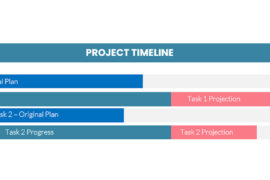 I’ve been very encouraged in recent months at all the organizations that I’ve come into contact with that are making a real attempt at multi-project management. It’s no surprise that enterprise-wide project management is a hot button right now. The economy is tight and virtually everyone is trying to do more with less. Also, the nature of business these days is that multiple projects are the norm rather than the exception. With resources being commonly restricted (I mean no one has a complete spare project team just standing by in their offices, waiting for you to pick a project so they can start doing something), enterprise resource capacity planning has become the universal holy grail.
I’ve been very encouraged in recent months at all the organizations that I’ve come into contact with that are making a real attempt at multi-project management. It’s no surprise that enterprise-wide project management is a hot button right now. The economy is tight and virtually everyone is trying to do more with less. Also, the nature of business these days is that multiple projects are the norm rather than the exception. With resources being commonly restricted (I mean no one has a complete spare project team just standing by in their offices, waiting for you to pick a project so they can start doing something), enterprise resource capacity planning has become the universal holy grail.
Despite these significant efforts in many major companies around the world, I’ve been asked more and more lately how to handle one of the most delicate aspects of multi-project management: prioritizing the projects.
In a lecture I gave recently I was speaking about the challenges of creating a centralized project management office only to be stopped cold by a comment from the floor. “We’ve done all that,” said one CIO of a large Canadian company you’d recognize if I mentioned it. “We’ve successfully created an enterprise project environment, loaded the data and now have produced enterprise resource-capacity planning reports for 3 months. The challenge we have is that when we send the list of projects to management to prioritize, they all come back ‘Priority 1’”.
He’s not alone. In working with companies from all over the world this year, I hear this comment has become all too frequently. Is it surprising? Not really.
There are several issues with this aspect of enterprise project management. First of all, who wants to have the job of informing a senior manager that their project has now been designated as a lower priority? Not me. Not anyone, really. So, as a consequence, when the issue comes up, there are few volunteers in the project team keen to tackle the challenge with management. It’s easier in some ways just to keep going.
Next, there are plenty of disincentives for management to not elect their project to be anything but the highest priority. Just like the challenge for project managers who contend for resources, the person who says their project is anything but the top priority is guaranteeing it will be delayed or even late.
When there’s a client involved, the conversation is even lest attractive. Now, selecting a project for a drop in priority means contacting the client and dealing with a delay. The impact may have legal implications and who wants to be bearer of that news?
Marketing will have a hand in things too in many organizations. There is nothing with such high priority as your next client and a project for tomorrow’s client always seems more important to marketing than yesterday’s news.
When project managers go to management with their corporate-wide data and explain that there are only so many factors to manage and either the amount of work, the number of resources or the schedule has to give, the most common response is: “Well, we can’t hire staff – hiring freeze. We can’t delay the schedules, everyone is counting on us to deliver on time and we can’t change the workload, those are our contracts. You’ll just have to have your people work harder.”
For some managers, no presentation of empirical data seems to make any difference. The consequence is that all projects are rated highest priority and everyone suffers.
Is there a solution? Of course. The secret to implementing culture change at this high a level of the organization is to be patient. Starting with presenting some VP a list of projects and a red pencil isn’t going to be productive. A better place to start is by outlining the problem to management without asking at first for a solution. By highlighting the lack of project prioritization and the resources now being spent on what must be low-priority tasks, you may find a friendlier face for accepting an enterprise system in the first place. Then, while working on the implementation of an enterprise system, start working on training exectuvies in the prioritization process. Expect that in most cases, it won’t be complete in a couple of hours.
A skilled project manager will be able to paint a picture for management which first of all, shows that not making a priority decision is, in fact, a decision. Also, the theoretical impact of project prioritization can be made to look very attractive. Just about every project management software vendor has a demonstration which shows the impact of multi-project prioritization – it’s a key selling features for almost everyone. This kind of demonstration can be part of your executive training and key to making the point that sooner or later, someone will have to deal with this decision.
Once you’ve got the ball rolling, implementing a new process without looking at real data is probably easier. You’ll need to deal with ho to assess a project and some measures for setting a project priority which is just a subjective feeling.
Some key indicators for each project, which you might consider in your own process, are: the length of time project has already been underway; the amount of money spent on the project to date; the project performance in terms of cost and schedule variance; project return on investment to the organization once the project is complete; legal implications of delay; categorizing work into bill-for and internal; risk assessment of the ongoing project work and; the impact on other projects.
Get the process documented and get the various managers to agree to it altogether. It’s important to get agreement across the board because if one senior executive won’t play, then the incentive for everyone else to do the same will become astronomical. There’s still going to have to some handholding when you get that first enterprise project list to deal with, but at least you’ll have paved the way. If you can get buy-in for the basic process from senior management, you’re well on your way for that final stage in enterprise project management. If not, you’ll still get benefits but the primary purpose of the system is likely to be thwarted.




